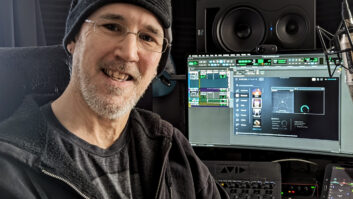The House Commerce Committee has a delicate balancing act to perform if it opts to impose legislation to expedite the digital television transition.
That was made clear during the panel’s hearing last week on working language it floated in a draft of possible regulations.
That working draft — which intentionally included controversial measures to spark discussion — mandated a Dec. 31, 2006, end to analog broadcasting without an 85 percent penetration stipulation, and underscored the FCC’s digital tuner timeline.
Many of those who testified stated that a hard 2006 deadline could disenfranchise millions of consumers and should be reconsidered. However, proponents of the measure argued that return of old analog spectrum would open needed frequencies for emergency communications services, while adding needed revenue to government coffers.
Before the hearing, Commerce Committee Chairman Billy Tauzin (R-La.) vowed that Congress would take action if private industries did not settle their issues quickly. “We will not be talking about this 10 years from now,” he assured.
As a threat, the discussion draft included several provisions that drew strong opposition.
The most noteworthy, was the mandated Dec. 31, 2006, shut-off date for analog television broadcasting, which removed the previous 85 percent penetration stipulation.
Robert Wright, CEO of the NBC Network, argued that the date was too early and would disenfranchise consumers who had not yet purchased digital television equipment.
Another controversial measure was a requirement that all TV sets sold in the U.S. after Jan. 1, 2006, recognize broadcast flags that could prevent unauthorized duplication and distribution or programming over the Internet.
Many of the speakers in the broadcast and content-distribution industries supported the broadcast flag measure. However, Gene Kimmelman, Consumers Union public policy senior director, stated that until working samples of the technology were made available, consumers have no real assurance that they will be able to record programs for their own fair use.
Similarly, the Consumer Electronics Association submitted written testimony stating that “interested parties must find a way to satisfy consumers’ legitimate expectations to record programs while preventing their unauthorized redistribution.”
Another proposed measure would prohibit analog TV outputs on consumer products after July 1, 2005.
The measure was presented as a possible solution to the open “analog hole,” that could enable pirates to duplicate high-quality content over analog jacks (such as HD component video) that do not have copy protection systems.
Alan McCollough, CEO of Circuit City stores, told the panel that: “I don’t think turning off analog outputs is a real option.”
He said such a measure would prevent the use of legacy products (such as DVD players and VCRs) with next-generation DTV sets — frustrating millions of consumers for years to come. If the measure were limited to only analog component video connectors — as many as 2 million consumers who purchased most DTV monitors to date potentially would be disenfranchised.
That concern was echoed in written testimony submitted to the panel by the Home Recording Rights Coalition (HRRC), which said, “even in the digital age, it must remain possible to provide an appropriate, high-quality output for every input on which consumers rely.”
Tauzin urged the industries to offer “a third solution” for closing the analog hole without prohibiting analog jacks or leaving the hole open to potential abuse. He added that some representatives of the computer industry have opposed requiring the implementation systems in PCs to recognize protective watermarks.
Most of the speakers at the hearing seemed to support a draft provision that cable operators transmit signals compatible with plug-and-play TV sets without the need for a set-top box by July 1, 2005.
Speakers from the broadcaster and cable industries, however, differed strongly on DTV must-carry requirements. The draft language required must-carry of all digital TV channels but did not issue a directive on whether or not distributors had to also carry digital multicasts or ancillary data.













